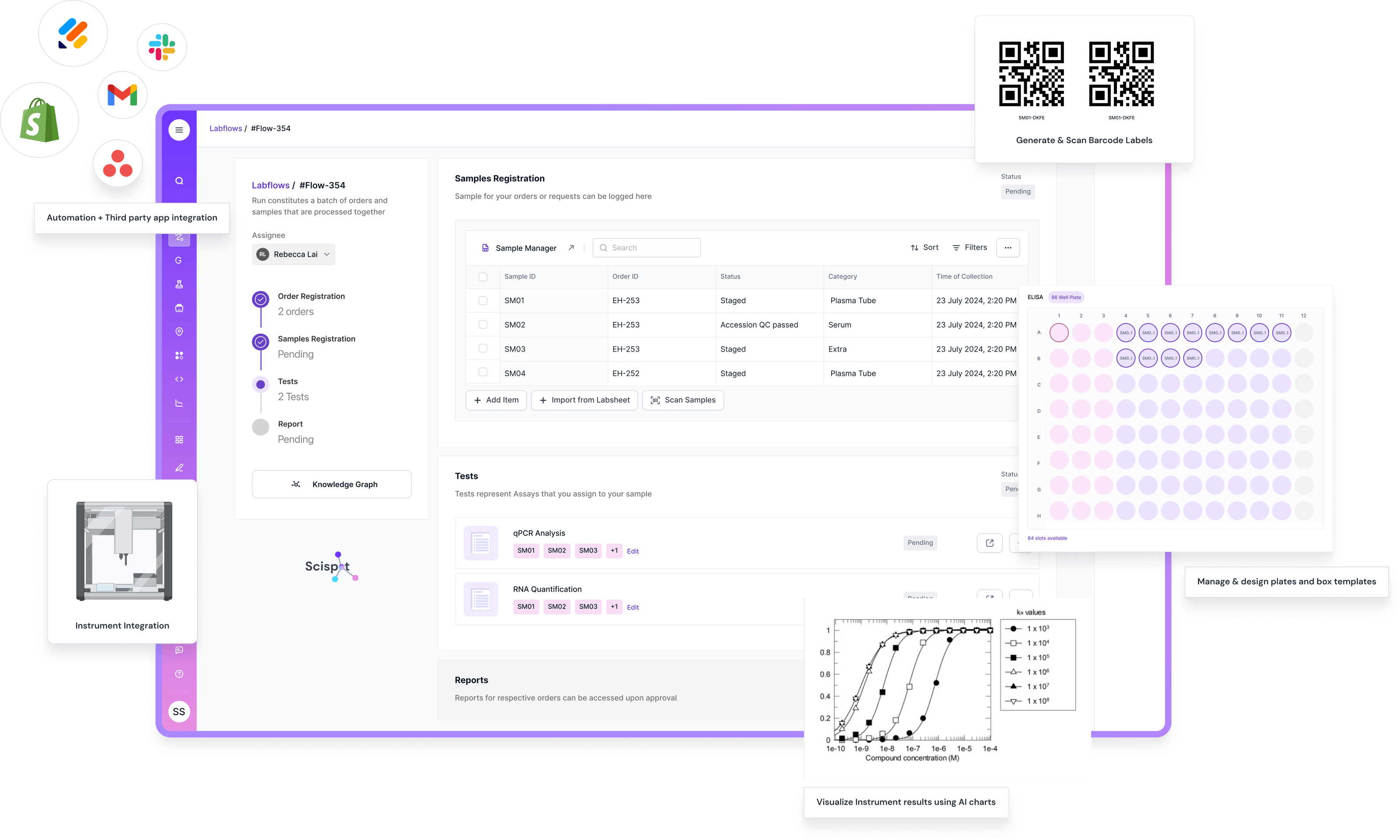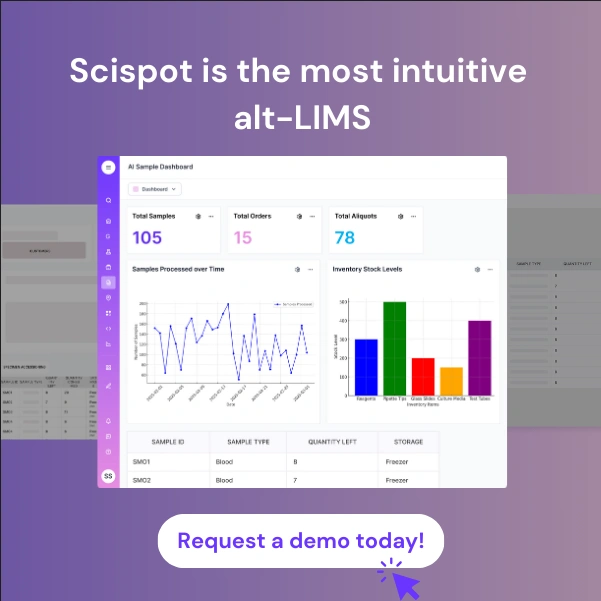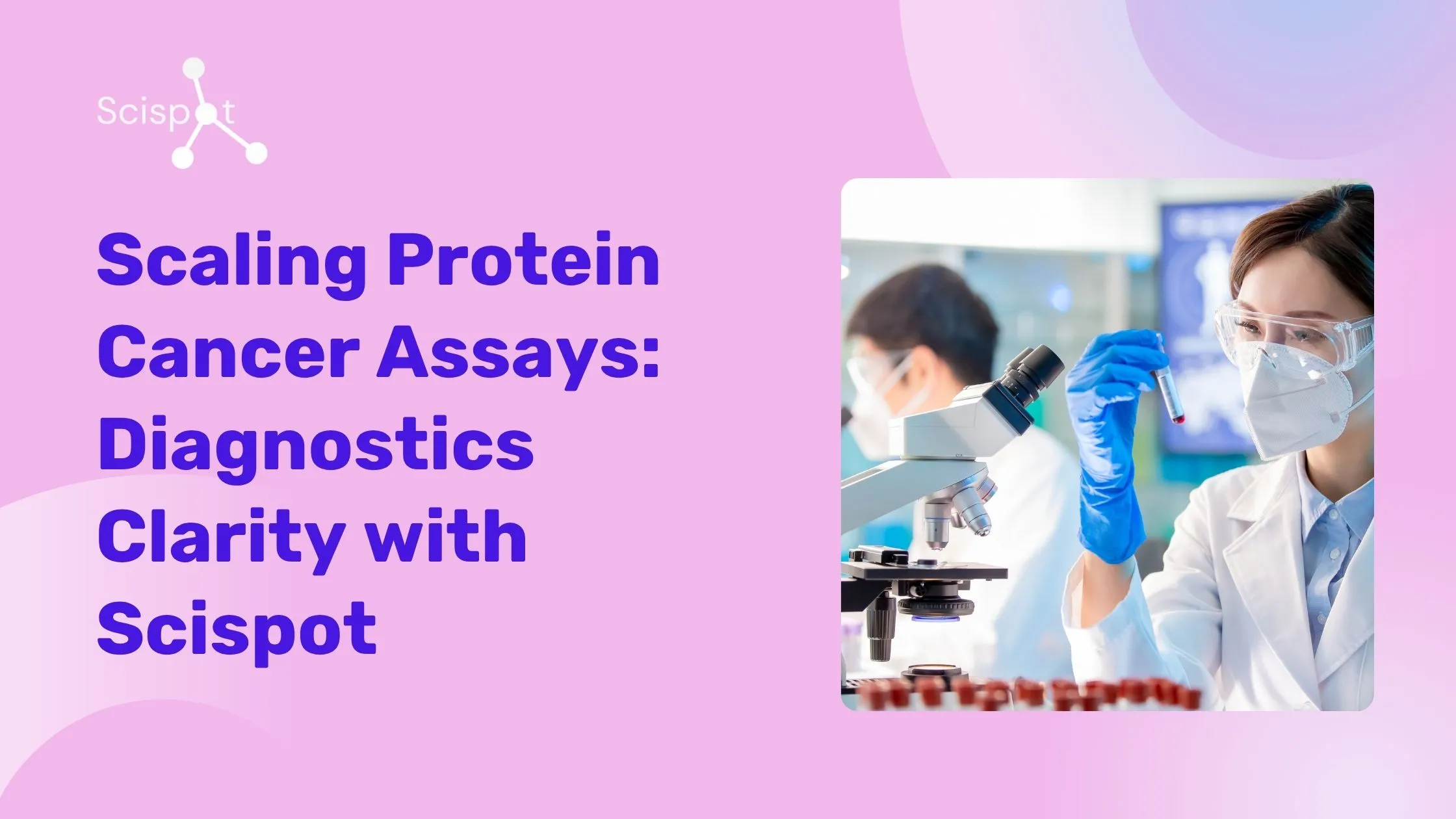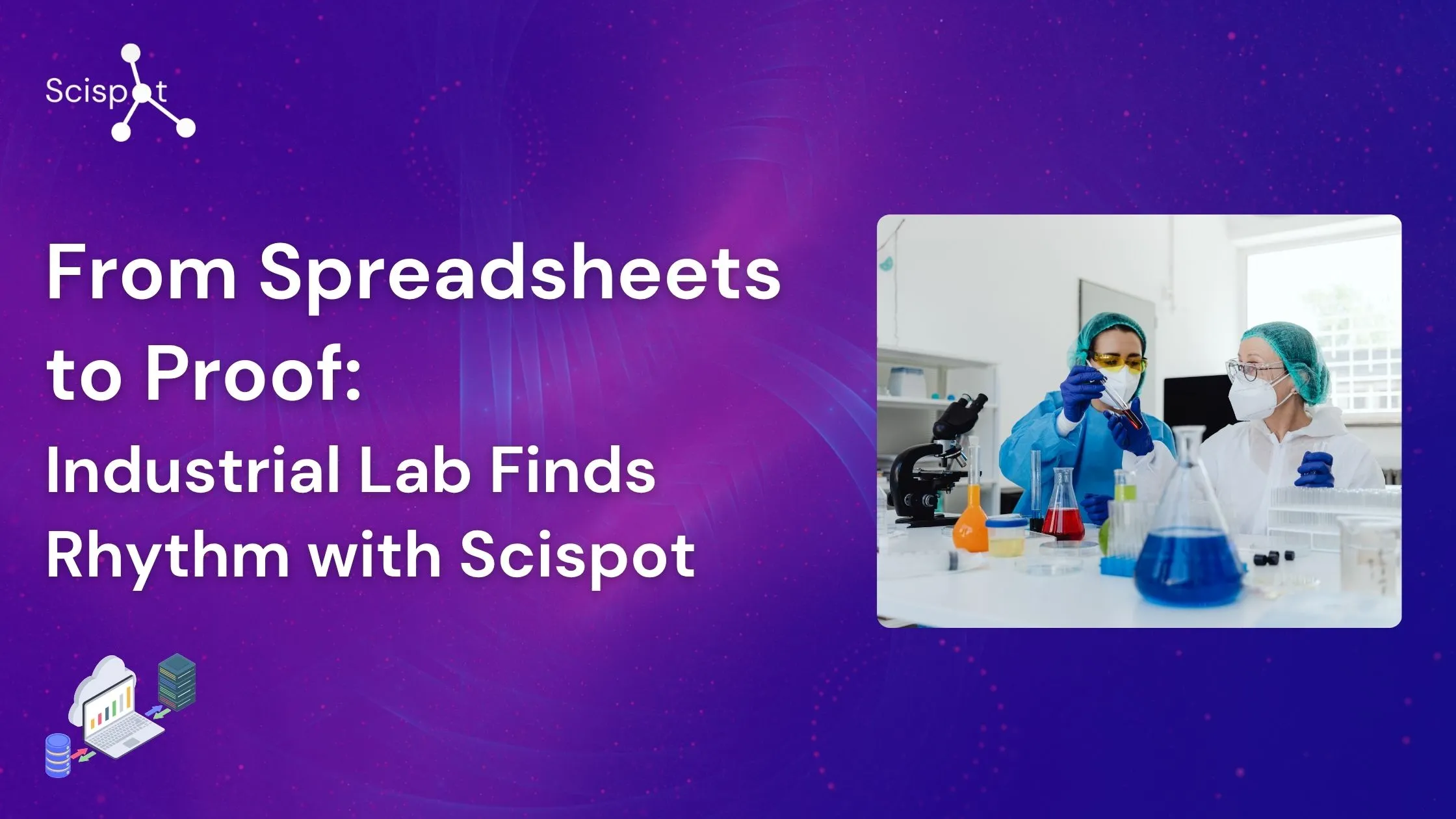There’s a moment every growing lab recognizes. It’s late, the team is cross‑checking spreadsheets, and a single missing field stalls a run that patients are counting on. The science is sound, the mission is clear, but the process is buckling under the weight of scale. That was the turning point for a mid-stage precision-diagnostics company building an AI-supported, protein-based test for early cancer detection. They didn’t need more heroics or another spreadsheet—what they needed was a platform that made the right way the easy way.

They chose Scispot as the platform. Not as a generic database or another “system to update,” but as the operational backbone that connects orders, samples, protocols, instruments, and people into one coherent flow. The goal was simple and human: to give scientists their time back, provide operations with a clear line of sight, ensure quality with a trustworthy record, and offer patients a faster path to answers. The work to get there required intention, empathy for real bench work, and a system designed for modern diagnostics.
We began where risk and reward are highest: intake. Orders are created in a guided workspace, samples are generated automatically with barcodes, and storage is assigned with precise location trails. Lineage isn’t an afterthought; it’s modeled from day one, so every aliquot, plate position, and transfer carries its history with it. That foundation removes the quiet dread of “which sample is this really?” and replaces it with simple confidence—what came in, where it went, who touched it, and why.
Next, we digitized the heart of production. Protocols moved from static documents into living, versioned procedures with clear inputs, outputs, timing, and acceptance criteria. Only trained users can run sensitive steps, and every action is logged with the context that matters. The platform meets labs where they are: liquid handlers, enrichment systems, readers, and analytical endpoints that produce files that are captured, validated, and automatically attached to the right sample and well. Reagent lots, calibration status, temperatures, and timestamps travel alongside results so questions can be answered in minutes, not meetings.
Quality control stops being a checkpoint at the end and becomes a fabric woven through the day. Controls are first‑class citizens, deviations carry the story of when and where they happened, and approvals live exactly where the work lives. Instead of hunting through shared drives or inboxes, teams open a record and see the truth of the run. It’s mundane in the best way: fewer surprises, fewer resets, more forward motion.

The human impact shows up quickly. Lab technicians follow a clear path instead of improvising under pressure. Operations leaders can see what’s queued, what’s blocked, and where to nudge. Quality reviewers spend more time evaluating and less time reconstructing. Data scientists finally receive clean, linked, lineage‑aware datasets that feed AI models without manual stitching. Leadership gets a single source of truth for throughput, stability, and readiness. The mood in the lab changes from reactive to ready.
Scispot supported this change with more than software. A resident LIMS specialist and automation experts partnered with the team to map reality, not theory. We started small with the critical path—intake, enrichment, preparation—and added depth only where depth was needed. The “how” stayed high‑level by design: keep the data model stable, configure templates for evolving methods, ingest instrument outputs reliably, and let role‑based controls and audit trails do quiet, constant work in the background. By the time the team scaled to larger batches, the system scaled with them, without a wrenching re‑platform.

The outcomes are straightforward and powerful. End‑to‑end traceability calms audits and unlocks faster investigations. Embedded QC reduces rework and increases confidence. Instrument‑aware data capture closes the loop between bench and analysis. Most importantly, the organization moves faster without cutting corners, because the path of least resistance now leads to the right result. Patients don’t see the platform, but they feel the benefit when answers arrive sooner and with greater certainty.
If you’re building AI‑enabled diagnostics on protein or other molecular signals, you already know that science isn’t the bottleneck—it’s the glue between steps. Scispot exists to be that glue. It standardizes what, clarifies why, and keeps how adaptable, so your team can move from promising signals to validated, reproducible outcomes. You don’t need a ground‑up LIMS rebuild. You need a system that honors the complexity of your work and makes it manageable every single day.

In the end, this story isn’t about software. It’s about a team that stopped firefighting and started flowing. It’s about confidence replacing caution tape, and about people who choose a platform that lets them do their best work on purpose. Scispot made their laboratory feel like one cohesive instrument—tuned, traceable, and ready for what’s next.







.webp)



